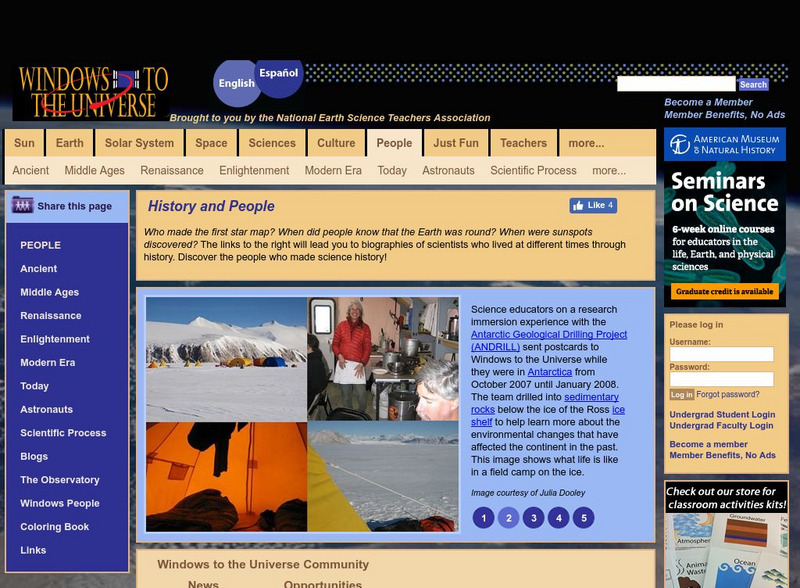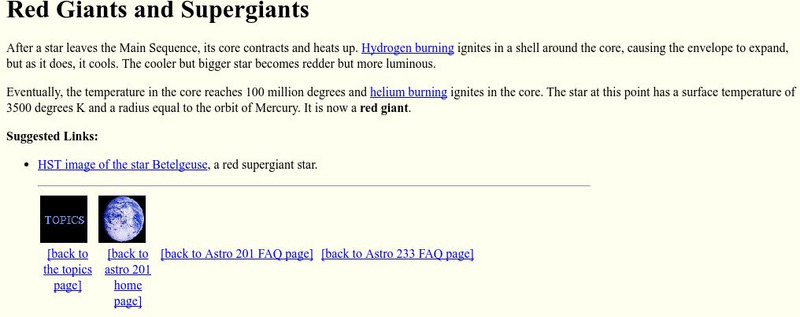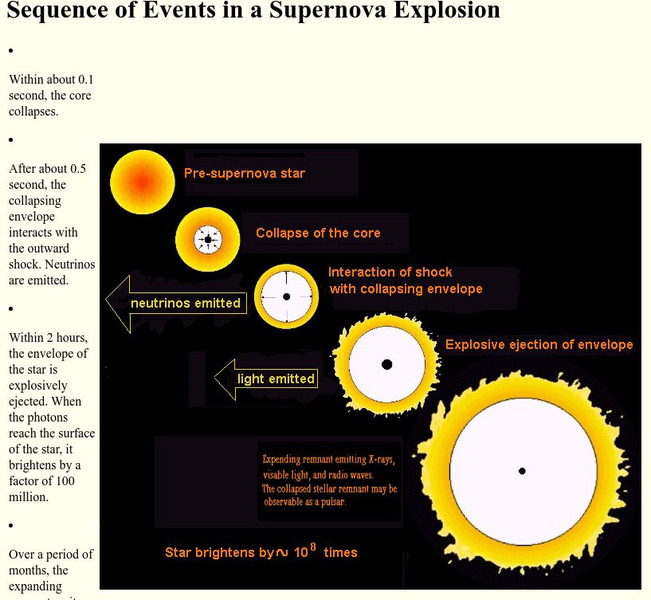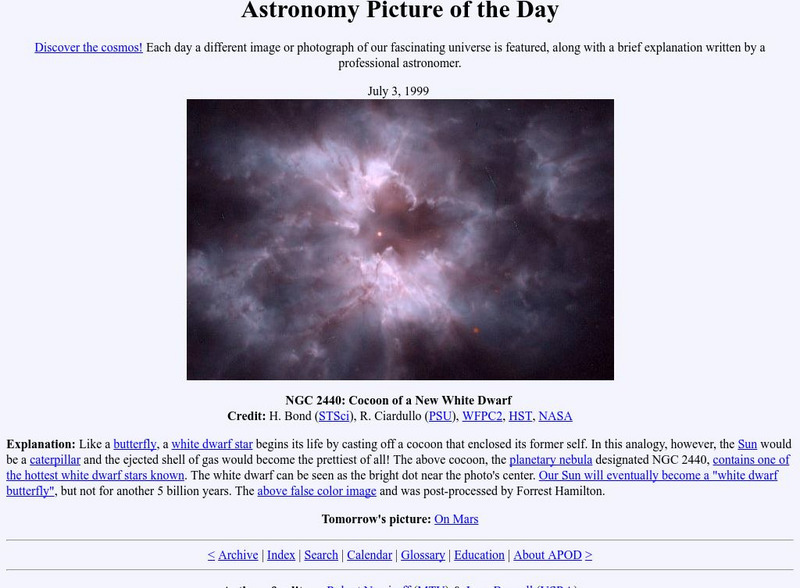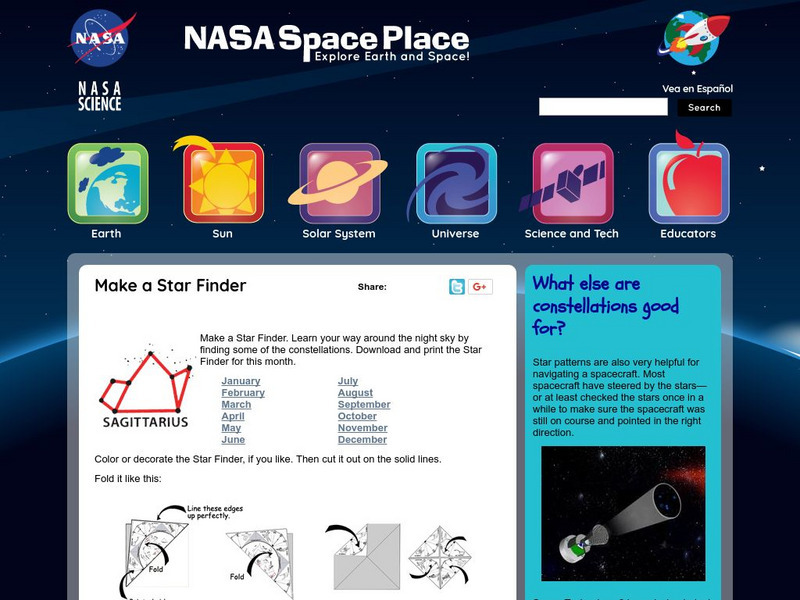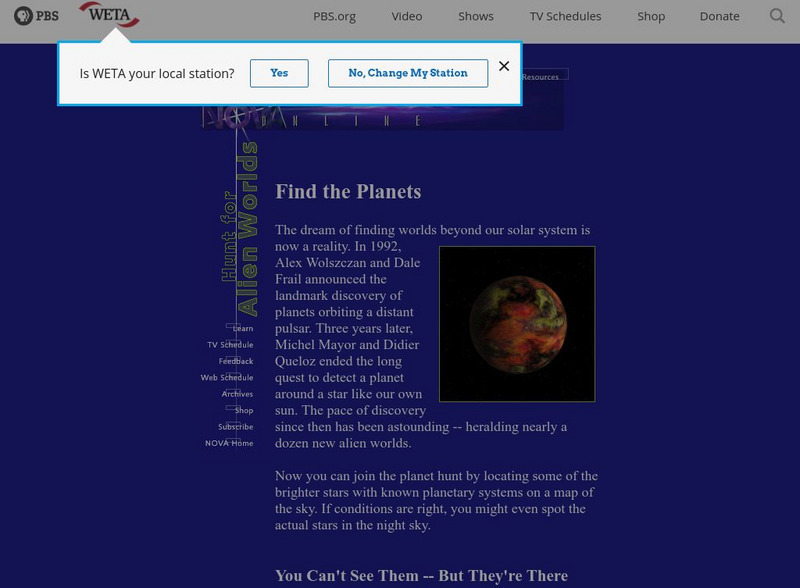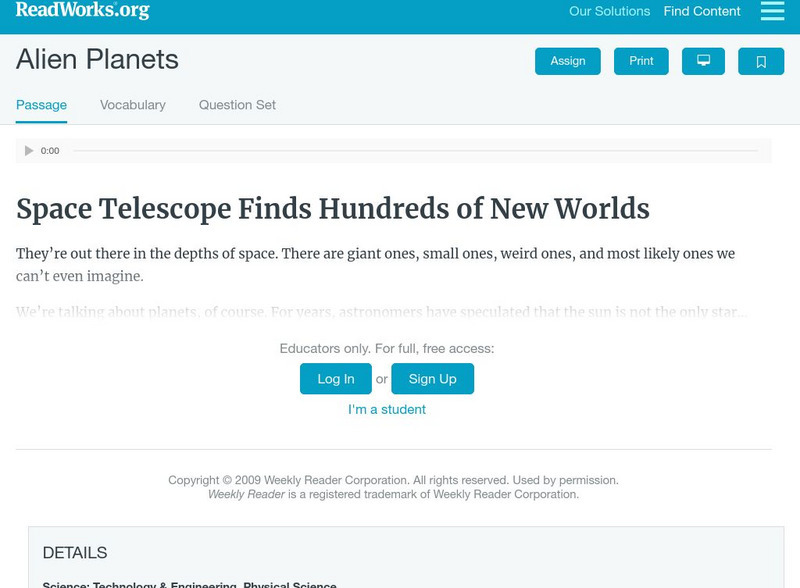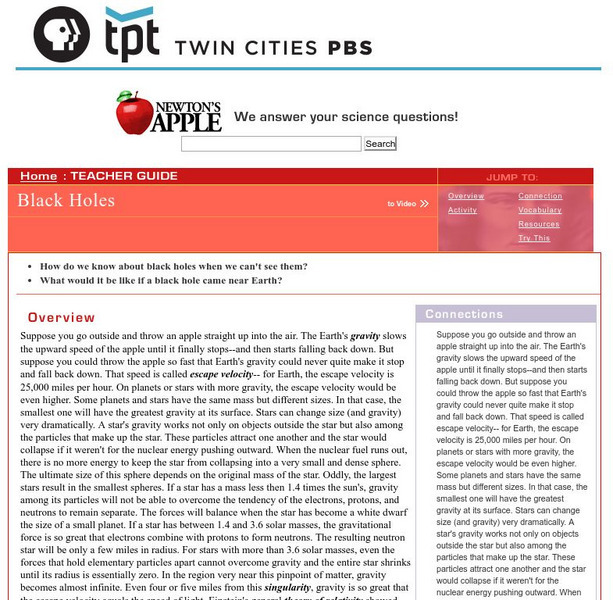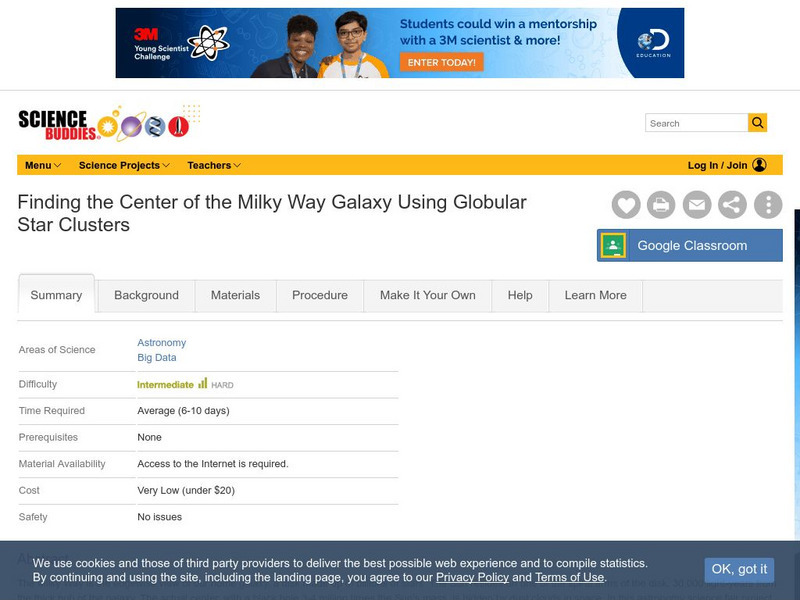California Institute of Technology
Cool Cosmos: Ask an Astronomer
Resource compiles a list of most frequently asked questions about Mercury. Each question is linked to an astronomer's answer. Kids can explore many aspects of this wonderful planet.
Other
Sloan Digital Sky Survey: Galaxy Zoo
Explore the universe like you have never seen it. Take part in classifying images of galaxies taken from the Hubble telescope archives. This is a crowdsourced scientific research project.
Seeker
Seeker: 'Doomsday' Ripples Through Galaxy
Learn about a storm errupting in the Teacup Galaxy involving the explosion of a supermassive black hole.
National Earth Science Teachers Association
Windows to the Universe: History & People
Biographies of people throughout history who looked at the sky and wondered what was there. Links to a detailed description of the planets and interactive activities.
Harvard University
Universeforum: Black Holes
This site explores black holes in an easy-to-understand format. Answers such quesitons as, "What are black holes?" and "Do black holes really exist?"
Other
Aas Science News: Possible Orphan Black Hole
Article reports on the discovery of a supermassive object 90 million light-years from Earth that may be an orphan black hole.
Cornell University
Cornell University: Astronomy: Red Giants
This Cornell University Astronomy Department site surveys the the hydrogen and helium burning that takes place in the evolution of a red giant. Links to related information.
Famous Scientists
Famous Scientists: Edwin Hubble
Learn about Edwin Hubble, an American astronomer who is known for playing a vital role in the development of extragalactic astronomy.
National High Magnetic Field Laboratory
Magnet Academy: John Daniel Kraus
For a man whose career involved the entire known universe, John Kraus had a remarkably insular upbringing. He was born and raised in Ann Arbor, Michigan, and earned his bachelor's, master's and doctoral degrees in physics, all at the...
Ministerio de Educación (Spain)
Ministerio De Educacion: Astronomia Para Ninas Y Ninos
Learn basic astronomy and travel through space. After you finish the lessons you can take the evaluation to obtain the clues needed to play the fun space games.
NASA
Nasa: Heasarc: What Are Pulsars?
A detailed definition of a pulsar with an explanation of the relationship of pulsars to X-ray astronomy and links to related resources.
NASA
Heasarc: Supernova
Describes the most energetic explosive event in outer space: the supernova. Includes animation of a supernova.
Cornell University
Cornell University: Astronomy: Sequence of Events in a Supernova Explosion
The complex sequence of events in a supernova explosion are explained and illustrated.
NASA
Nasa: Astronomy Picture of the Day: White Dwarf Cocoon
A white dwarf star begins its life by "casting off a cocoon (nebula)that enclosed its former self." There are many links within the text to related topics.
NASA
Nasa: Mission: Science: Electromagnetic Spectrum: Infrared Waves
Infrared light lies between the visible and microwave portions of the electromagnetic spectrum. Infrared light has a range of wavelengths, just like visible light has wavelengths that range from red light to violet.
NASA
Nasa: Make a Star Finder
Learning game and activity that teaches about the constellations by making a star finder to help locate them.
American Association of Physics Teachers
Com Padre Digital Library: Physics to Go: Explore Physics on Your Own
Contains a full physics curriculum with links to games, webcasts, and activities. By creating a free account, students and teachers can create their own personal collection of resources.
PBS
Pbs: Find the Planets
Find out how astronomers locate new planets by observing the traits of the stars they orbit. Get some tips at locating stars with the help of star maps.
Other
Black Holes and Neutron Stars
Contains information about black holes and neutron stars: how they form, what they're like, and how we know they are there.
NPR: National Public Radio
Npr: New Observatory Brings Stars Closer to Earth
A radio story describing the development of the newest technology in telescopes based on an old idea. Images of the 80-acre interferometer are shown on the site.
Utah Education Network
Uen: Moon Light Through the Month
In this lesson, students are asked to order cards showing different phases of the moon. Includes student handouts.
Read Works
Read Works: Alien Planets
[Free Registration/Login Required] This nonfiction piece discusses the discovery of previously unknown planets in the solar system. This passage is a stand-alone curricular piece that reinforces essential reading skills and strategies...
PBS
Newton's Apple: Black Holes
This site from Twin Cities Public Television contains great information from a program called "Newton's Apple" concerning black holes. Contains activities for viewers to try to emphasize points related to black holes. Topics include:...
Science Buddies
Science Buddies: Find Center of Milky Way Galaxy Using Globular Star Clusters
The Milky Way is the edgewise view of our home galaxy, a disk made up of billions of stars. The Sun resides on one of the spiral arms of the disk, 30,000 light-years from the thick hub of the galaxy. The actual center, with a black hole...
Other popular searches
- Astronomy and Space Science
- Space Science Astronomy
- Space and Astronomy
- Preschool Astronomy/space
- "Astronomy and Space Science
- Astronomy and Space Lesson





